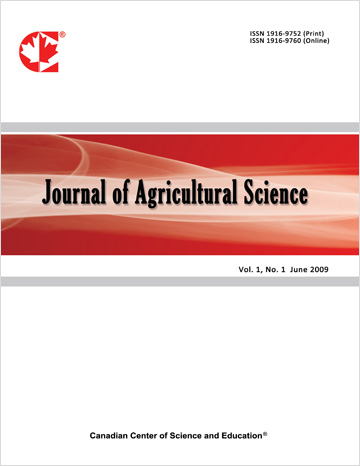Development of Predictive Equations for Body Weight Estimation in Al-Nuaimi Sheep Using Phenotypic Traits in Qassim Region
- E. F. Mousa
- A. A. Aloufi
- S. A. Al-Sharari
- B. F. Al-Fneikh
- A. Alrashidy
- M. F. Elzarei
Abstract
Data on 3600 records from 300 sheep local breed of Al-Nuaimi were recorded through the period from November 2022 to May 2023. Study data were collected from 4 private smallholder farms from Al Mothnb and from Bukayriyah 150 males and 150 females in ages 12, 18 and 24 months in Qassim region, KSA. Twelve traits of body measurements were taken by using a measuring tape. The traits under study were Body Length (BL), Tail Length (TL), Tail Width (TW), Height at Center Point (HC), Chest Width (CW), Cannon Circumference (CC), Rump Heights (RH), Ear length (EL), Head Length (HL), Muzzle Diameter (MD), and Cheekbone Distance (Ck). After trying many linear and non-linear equations on the traits under study to best equations to predict the weights, equation Ŷ = 1.00 + 2.6 BL was preferred over all the 150 equations that were tried to predict body weight from body length with accuracy 0.97. While equation Ŷ2 = 1792.65 + 3.103e (BW) predict the body length from the body weight with accuracy 0.894. To predict the body weight from ear length; equation Ŷ = 8.93 + 3.34 is achieved was chosen with R2 = 0.94, while the equation Ŷ2 = a + b/x2 with R2 = 0.91 to predict EL from BW with coefficient a = 163.17, b = -401413.6. From the head length we predict body weight by the equation Ŷ = a + bx were a = 2986 and b = 0.976. The equation Ŷ = 2.720 + 3.698 (TL) predicted body weight from tail length Ŷ = 0.80 + 3.20 (CH) was best equation to predict BW from the CH, while the two coefficients were a = 5.305 and b = 0.262 but with less R2 = 0.68 when we predict CH from the BW. From the trait chest width, we got the best equation at all with a = 23.30 and b = 3.50 with accuracy = 0.90. The height at wither (RH) the intercept a = -6150 and b = 1.57, with R2 = 0.93. (MD) trait had a best equation chosen Ŷ = 39.61 + 8.78 (MD) to predict BW from it, while, when predict the (MD) from body weight the estimate of coefficient a = 32.33 and b = (-85728.61) in the equation Ŷ2 = a + b/x2. Equation with Ŷ = 47.00 + 1.657 (TL) and R2 = 0.96 was preferred than all. While equation Ŷ-1 = .43 + (-0.0006) (BW) with R2 = 0.99. The (Ck) trait was less accurate when compared with other traits when we used to predict BW by equation Y = a + bx, a = 18.56 and b = 9.58 and low R2 (0.67). (CC) trait got equation Ŷ = 42.68 + 7.73 (CC) with R2 = 0.91, while Ŷ = 4.34 + (-3.33E-3) (BW) in equation y2 = a + b − x with R2 = 0.95. As a conclusion 7 morphological measurements; body length, width of chest, tail length, cannon circumference, ear length, muzzle diameter and head length occupy the top positions of 11 traits and can be used as independent variables to predict body weight as dependent variable in linear equation. The estimated coefficients of determination (R2) were at least 0.89. The body weights were used also to predict the 6 of these morphological traits namely HC, TL CC, EL, MD and HL with accuracy ranging from 0.42 to 0.84.
- Full Text:
 PDF
PDF
- DOI:10.5539/jas.v17n6p72
Journal Metrics
- h-index: 67
- i10-index: 839
- WJCI (2022): 1.220
- WJCI Impact Factor: 0.263
Index
- AGRICOLA
- AGRIS
- BASE (Bielefeld Academic Search Engine)
- Berkeley Library
- CAB Abstracts
- ChronosHub
- CiteSeerx
- CNKI Scholar
- Copyright Clearance Center
- CrossRef
- DESY Publication Database
- DTU Library
- e-Library
- EBSCOhost
- EconPapers
- Elektronische Zeitschriftenbibliothek (EZB)
- EuroPub Database
- Excellence in Research for Australia (ERA)
- Google Scholar
- Harvard Library
- IDEAS
- iDiscover
- Jisc Library Hub Discover
- JournalTOCs
- KindCongress
- LIVIVO (ZB MED)
- LOCKSS
- Max Planck Institutes
- Mendeley
- MIAR
- Mir@bel
- NLM Catalog PubMed
- Norwegian Centre for Research Data (NSD)
- Open J-Gate
- OUCI
- PKP Open Archives Harvester
- Polska Bibliografia Naukowa
- Qualis/CAPES
- RefSeek
- RePEc
- ROAD
- ScienceOpen
- Scilit
- SCiNiTO
- Semantic Scholar
- SHERPA/RoMEO
- Southwest-German Union Catalogue
- Standard Periodical Directory
- Stanford Libraries
- SUDOC
- Swisscovery
- Technische Informationsbibliothek (TIB)
- Trove
- UCR Library
- Ulrich's
- UniCat
- Universe Digital Library
- WorldCat
- WRLC Catalog
- Zeitschriften Daten Bank (ZDB)
Contact
- Anne BrownEditorial Assistant
- jas@ccsenet.org
